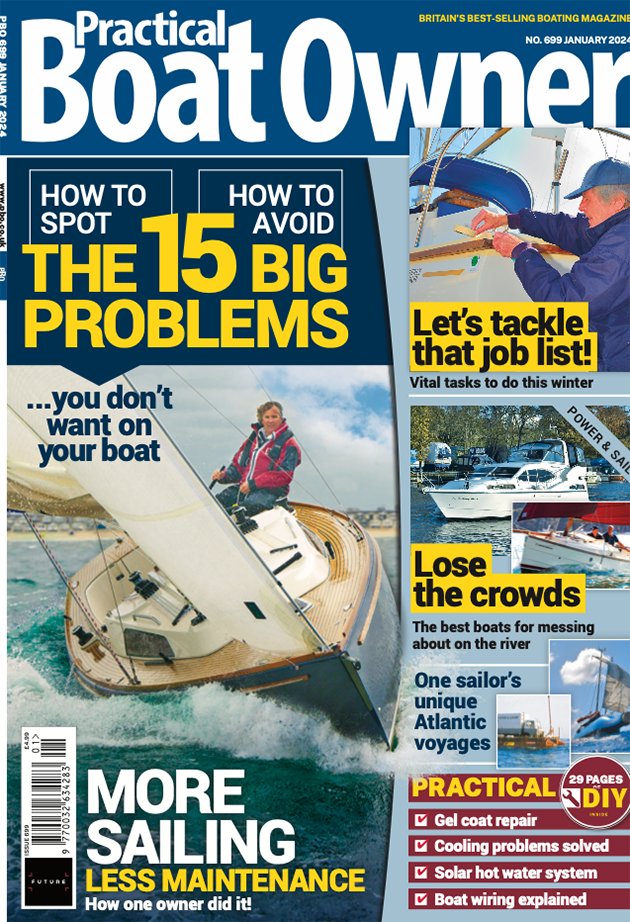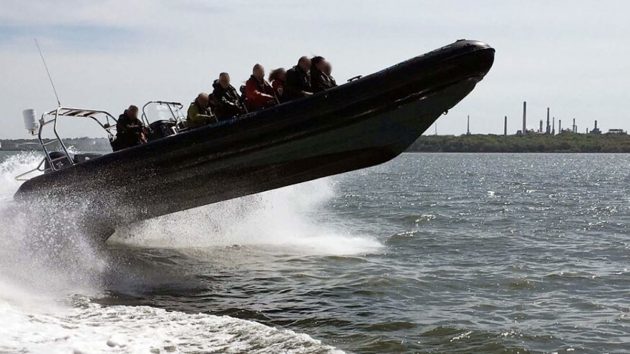The Marine Accident Investigation Branch has concluded that a fatal RIB accident "would likely not have happened had the trip been conducted in line with industry good practice."
The Seadogz RIB crash on Southampton Water, which killed 15-year-old Emily Lewis “would likely not have happened had the trip been conducted in line with industry good practice.”
This is the conclusion of an investigation by the Marine Accident Investigation Branch (MAIB).
The Seadogz RIB crash happened on the morning of 22 August 2020, when the commercially-operated boat hit the North-West Netley buoy head-on at a speed of 38.4knots.
The force of the impact briefly threw the bow of Seadogz upwards, while the starboard engine stopped; the deceleration forces caused all the passengers, who were wearing lifejackets, to be thrown violently forward from their seats.
The 53-year-old skipper, who was standing, was thrown forward into the steering console. All suffered impact injuries; two passengers, seated in the front row of jockey seats, were thrown into the water.
Emily Lewis, a 15-year-old passenger who was sitting in the middle of the bench seat, was propelled forward into a handhold and sustained fatal injuries.
It was her first voyage on a RIB, and the 60-minute trip had been booked by her parents as a surprise.

The bench seat on Seadogz. Credit: MAIB
The MAIB investigation concluded that the skipper, who held various RYA certificates appropriate for the operation of Seadogz including RYA Yachtmaster Offshore Sail and Power certificates of competency (both commercially endorsed), did not see the buoy in sufficient time to take avoiding action as he had lost positional awareness, most likely due to the high mental workload associated with operating Seadogz alone at high speed near other marine assets.
It also concluded that:
- The seating and handholds on Seadogz afforded little protection to the passengers in the event of rapid deceleration.
- The boat’s operator did not have a safety management system, while the risk assessments for the boat were cursory and generic. The risk assessments neither considered the risk of an impact or collision during a RIB experience ride nor the appropriate manning of the RIBs.
- There were significant limitations in the regulations for small high-speed commercial passenger craft, with no specific requirements for factors such as crash protection, seat design, forward visibility and a safety management system. Further, the current regulations did not consider the intended operation or high-speed operations of a small commercial craft.
Recommendations have been made to the Maritime and Coastguard Agency to: conduct an anthropometric assessment of the design and operational requirements for the protection of passengers and crew on small commercial high-speed passenger craft; ensure the relevant outputs of the anthropometric assessment are, where appropriate, promulgated into guidance and incorporated as future requirements; and, to expedite the introduction of the Sport & Pleasure Vessel Code.
The British Standards Institution has been recommended to propose to the International Organization for Standardization that ISO 11591 be revised to include a field of vision requirement from the steering position of small craft.

Damage to the bow of Seadogz following the collision. Credit: MAIB
A recommendation has been made to The British Ports Association, UK Harbour Masters’ Association, and the UK Major Ports Group to contribute to the development of guidance on the oversight of small commercial high-speed passenger craft operations in port areas.
Associated British Ports Southampton has been recommended to ensure that its risk assessments consider the operation of small commercial high-speed craft within the port limits and agree the proper use of these craft with their operators.
The manufacturer of Seadogz, Red Bay Boats Ltd, has been recommended to ensure that the design of the seats, handholds and restraints on its high-speed craft meet the latest relevant industry guidance and that the documentation provided to owners is accurate.
Continues below…
Jail for RIB driver who crashed into a buoy, causing the death of a passenger
RIB driver Morgan George Smith, 21, of Northampton is now serving a three-year jail sentence for gross negligence manslaughter
MAIB report warns RIB owners to check seats
Accident in July 2007 caused by poor seat fitting on board 6.3m Ribquest
Cruising in powerboats long distance: a quick guide
When cruising in powerboats, especially small open boats, safety is paramount. Jake Kavanagh shares his advice for relaxed high-speed adventures…
Boat fuel economy: how to save petrol
Modern outboard engines are fuel efficient, but there are still ways you can get more miles per litre from your…
The Chief Inspector of Marine Accidents, Andrew Moll OBE, said: “The fact that a passenger excursion on a modern rigid inflatable boat being operated in favourable conditions by an appropriately qualified and highly experienced skipper could result in such terrible consequences is difficult to comprehend.
“Two things are especially significant about this tragic accident in which 15-year-old Emily Lewis sadly died and the other passengers all sustained injuries, many of which were serious:
“The first is that the accident would likely not have happened had the trip been conducted in line with industry good practice. All skippers of commercial high-speed craft are taught safe boat handling while gaining their qualifications, and there is no excuse for abandoning professional standards when undertaking a high-speed trip or experience ride.
“The second is that passengers in small high-speed craft are very vulnerable to impact and vibration injuries. In the last 15 years, the MAIB has investigated numerous accidents involving high-speed passenger craft and made various recommendations to improve the safety of this sector. However, as yet, little has been done to provide proper protection to passengers and crew from these hazards that routinely result in life-changing injury and, occasionally, death.
“I am therefore hoping that the maritime regulator, manufacturers and operators of small high-speed passenger craft will take the lessons from this report as a stimulus to action. As the report says, this was an accident waiting to happen. Let it be the last,” added Moll.
Enjoy reading Fatal Seadogz RIB crash in Southampton Water was “an accident waiting to happen”?

A subscription to Practical Boat Owner magazine costs around 40% less than the cover price.
Print and digital editions are available through Magazines Direct – where you can also find the latest deals.
PBO is packed with information to help you get the most from boat ownership – whether sail or power.
-
-
-
- Take your DIY skills to the next level with trusted advice on boat maintenance and repairs
- Impartial in-depth gear reviews
- Practical cruising tips for making the most of your time afloat
-
-
Follow us on Facebook, Instagram, TikTok and Twitter








